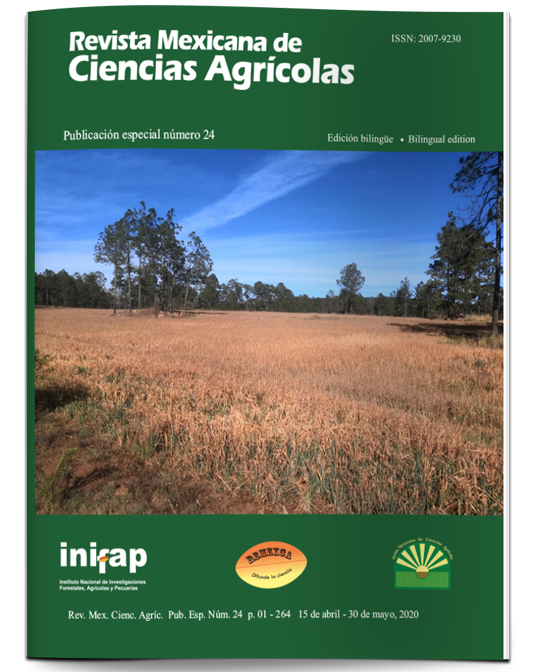Production and quality of grain and stubble in maize in the Puebla highlands
DOI:
https://doi.org/10.29312/remexca.v0i24.2359Keywords:
crop-livestock integration, digestibility, high valleys, stubble qualityAbstract
The majority of the ruminant production units in the high valleys in various regions of Mexico integrate maize stubble as a source of fodder. Therefore, this crop must be a high yielding of both grain and stubble of quality. Thus, the objective of the present research was to evaluate the performance of 36 genotypes of maize in the highlands of Puebla in the aspects mentioned above, during the year 2017. The genotypes screened were seven commercial hybrids, a synthetic variety, nine free-pollinated populations and nineteen experimental simple-cross hybrids derived from local varieties. The sowing was carried out in three experiments with lattice design 6x6 in experimental units of two furrows 80 cm wide by five meters long. Variables related to the characteristics of the plants and chemicals from the stubble produced were evaluated. The main discriminatory variable was useful yield (USY) that included grain yield (GRY), stubble production and digestibility. The genotypes were different (p< 0.001) in all the measured variables. In USY, the outstanding genotypes were: HS-2®, Aguila 215W®, SM-16 60x66, SM-16 5x64, SM-16 64x66, SM-16 53x64, SM-16 13x44, SM-16 23x60, SM-16 58x21, SM-16 44x64, SM-16 136x142, Niebla® and SM-16 21x64. However, this variable manages to mask genotypes that have high yields of grain and stubble but that have low digestibility. Only the SM-16 5x64 had superiority in digestibility, but had average yield of stubble dry matter, which gives it greater potential to be a dual purpose genotype.
Downloads
Downloads
Published
How to Cite
Issue
Section
License
The authors who publish in Revista Mexicana de Ciencias Agrícolas accept the following conditions:
In accordance with copyright laws, Revista Mexicana de Ciencias Agrícolas recognizes and respects the authors’ moral right and ownership of property rights which will be transferred to the journal for dissemination in open access. Invariably, all the authors have to sign a letter of transfer of property rights and of originality of the article to Instituto Nacional de Investigaciones Forestales, Agrícolas y Pecuarias (INIFAP) [National Institute of Forestry, Agricultural and Livestock Research]. The author(s) must pay a fee for the reception of articles before proceeding to editorial review.
All the texts published by Revista Mexicana de Ciencias Agrícolas —with no exception— are distributed under a Creative Commons License Attribution-NonCommercial 4.0 International (CC BY-NC 4.0), which allows third parties to use the publication as long as the work’s authorship and its first publication in this journal are mentioned.
The author(s) can enter into independent and additional contractual agreements for the nonexclusive distribution of the version of the article published in Revista Mexicana de Ciencias Agrícolas (for example include it into an institutional repository or publish it in a book) as long as it is clearly and explicitly indicated that the work was published for the first time in Revista Mexicana de Ciencias Agrícolas.
For all the above, the authors shall send the Letter-transfer of Property Rights for the first publication duly filled in and signed by the author(s). This form must be sent as a PDF file to: revista_atm@yahoo.com.mx; cienciasagricola@inifap.gob.mx; remexca2017@gmail.
This work is licensed under a Creative Commons Attribution-Noncommercial 4.0 International license.



